

courtesy of the artists
In this text, artist Olaf Hodne questions the presupposed permanence of jewellery, and introduces us to three artists, Sayo Ota, Íris Elva Ólafsdóttir, and Kristine Ervik, whose practices embrace perishable materials, making art jewellery not made to last.
Three artists. Three different approaches to jewellery making, and the fleeting existence of the materials they use. The first one uses bath bombs to make a necklace that fizzes away while taking a bath. The second, with a single cotton thread, strings the leftover seeds from a dinner, dried plants, and small flowers of lavender like embroidery to form a necklace. The third makes ring after ring, weaving these together into a chain of steel, silver, and brass, but also inviting rust and dents to the surface.
A new generation of jewellery artists in the field of conceptual jewellery art, where the eternal usefulness of jewellery is rejected. Sayo Ota, Íris Elva Ólafsdóttir, and Kristine Ervik studied metal and jewellery art together at the Oslo National Academy of the Arts, marking a generational change for jewellery artists by taking up space in the small and well-established jewellery art scene in Norway.
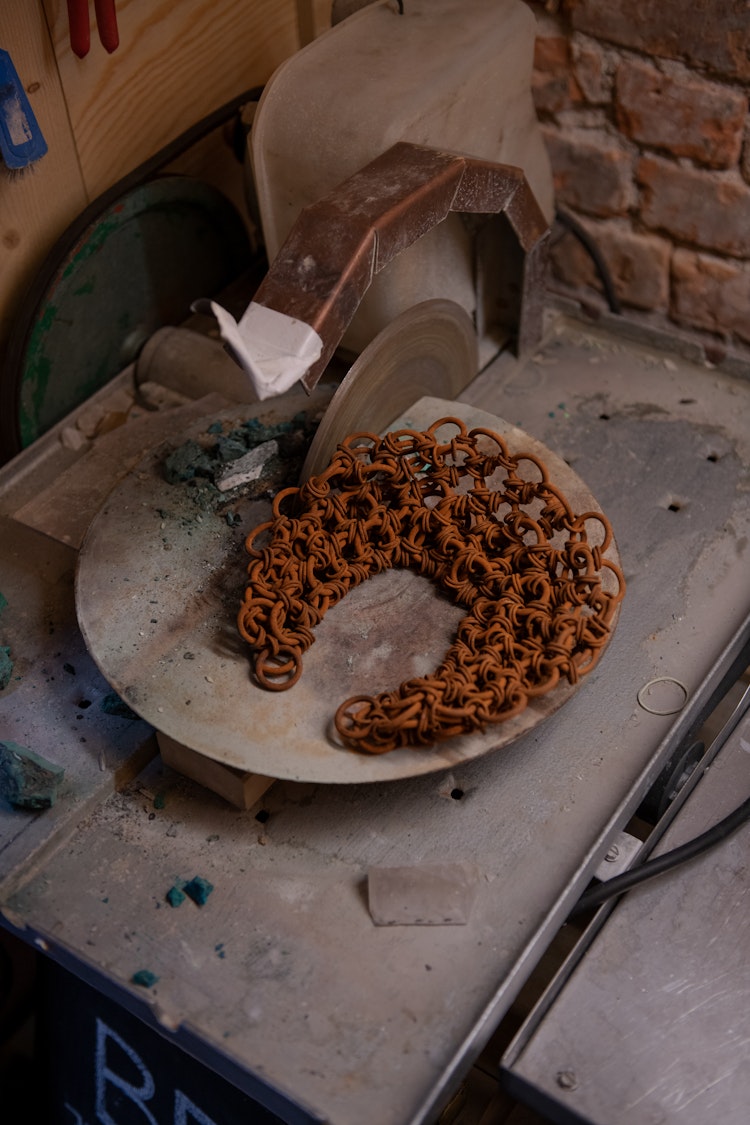
The first of these artists, Sayo Ota, never sticks to one material, and makes each project an exploration of a new technique and concept. When I ask her why she’s always choosing different materials, she says, ‘As a nomad, I stay in different places and speak different languages. Depending on the context, I employ mediums likewise.’ The installation below was created while Ota was living in Norway, inspired by the lack of access to a bathtub in her apartment. Ota longed for the calming ritual of taking a bath, like she frequently did in Japan. Taking a warm bath after a long day, with a bath bomb that coloured the water and gave a soothing smell. She made a necklace of homemade, oval-shaped bath bombs; a groove in the dry chalky substance holding the string in place around each piece, forming a chain. She filmed one of them disintegrating in the water, then projected the film onto the water in a bathtub, as an installation. The pastel colours and texture of the bath bombs made them seem edible, like love hearts. Actually wearing the necklace in a bath would melt away the necklace with a fizz and colour the water, leaving only the string behind. A single-use only piece of jewellery.
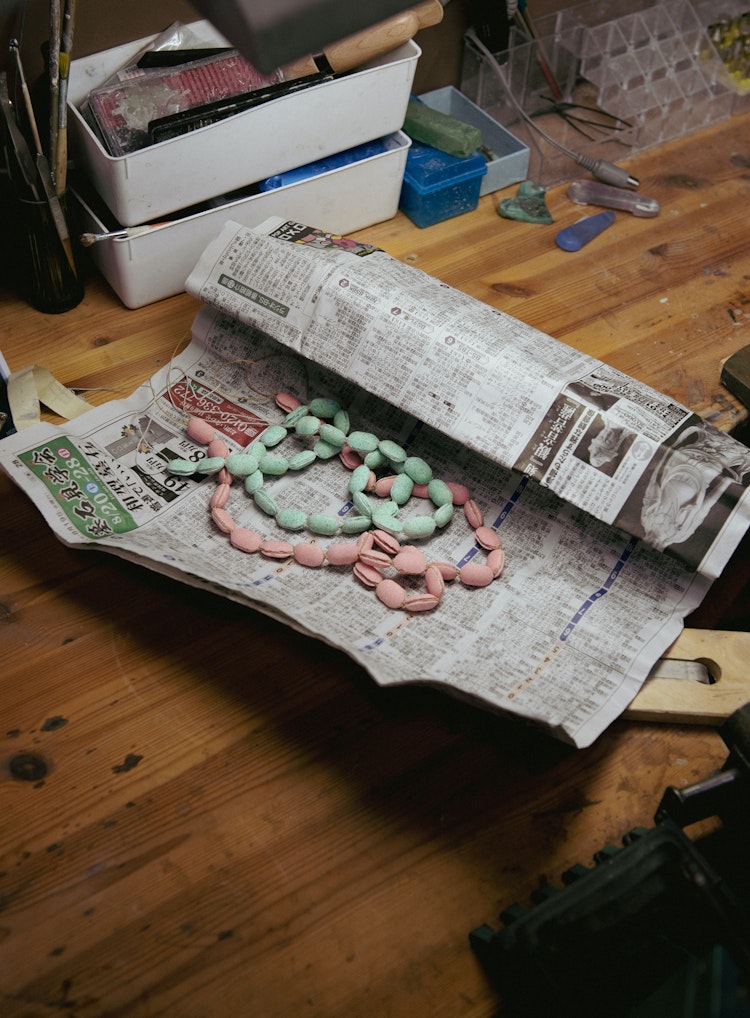
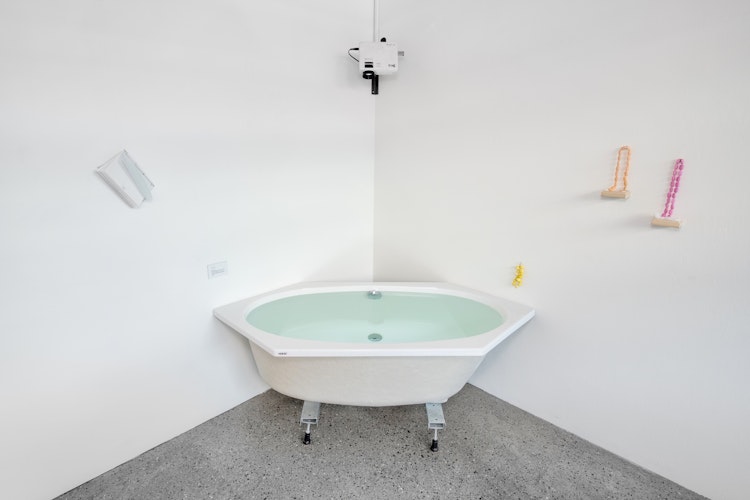
The second, Íris Elva Ólafsdóttir, is bound by the endless shapes and structures of plant and animal life, and compelled to create new life from dead plants and their detritus. Life still lingers in the recognisable shapes of stems and petals, even though they are far beyond their short lifespan. The physical body lingers for some time as a husk, before it enters the loop again.
Ólafsdóttir states that she wants to give the remnants she uses ‘a new purpose, another way to show off their beauty that would otherwise go unnoticed’. ’I think about if these materials would not have been picked, collected, and used, then where would they be, and how would they look like? The objects create a visual stage for the material to decay, yet live.’1
Ólafsdóttir’s works resemble the earliest of jewellery; an archaic necklace, crafted by hunter gatherers before civilisation. There is a longing in her work, an attempt to understand through and reflect with one’s hands, by adding only a few other materials like the cotton or metal thread to bind the plants. To the everyday life of cutting a bell pepper and removing the seeds, to the withering plant life that happens annually, she emphasises her focus on the universal curiosity to pick up what the forest lets go of every autumn. Plants and seeds, tied on a string, sewing a thread through the crust of the flower stem, dried and hollow, its fibres holding it together even in death.
Ólafsdóttir states that ‘by using constant repetition by weaving or embroidery, my headspace transcends into a kind of meditative state where the material gets to choose its own path. (…) I am interested in the thought of objects having their own lifespan. The element of fragility, time, and outside effects creates value for an otherwise non-valuable material. In a way, it is also a bit of rebellion against durable, hard, and precious materials that jewellery is usually made of.2
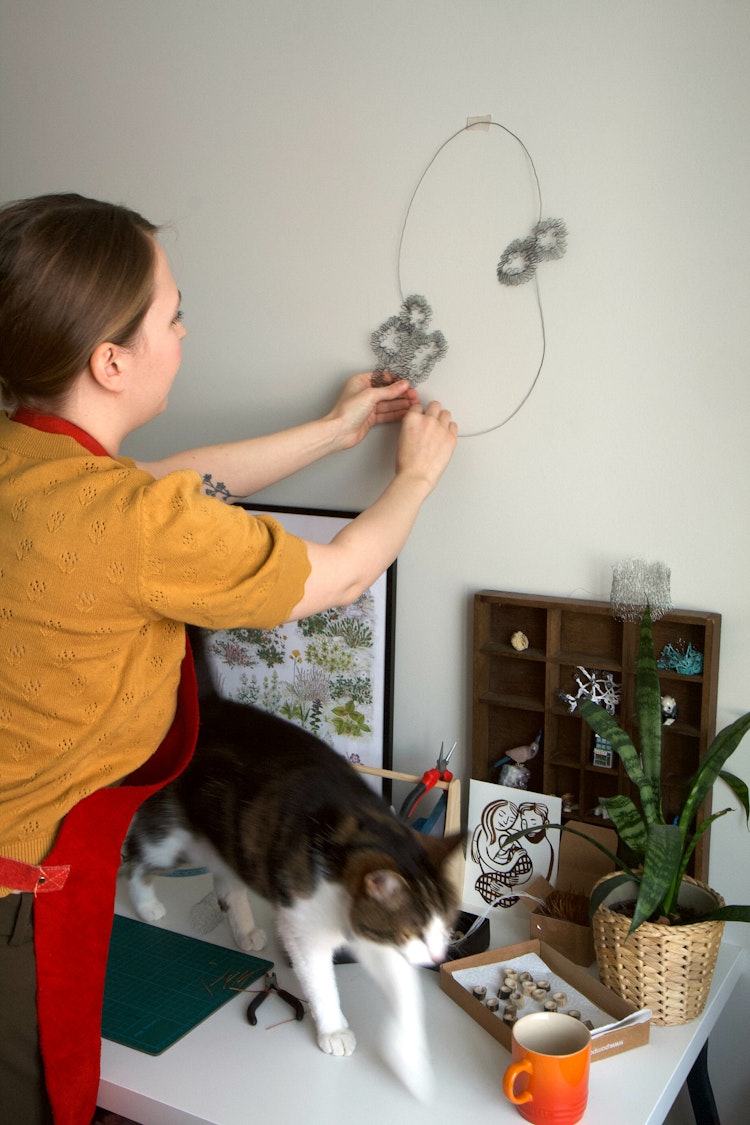
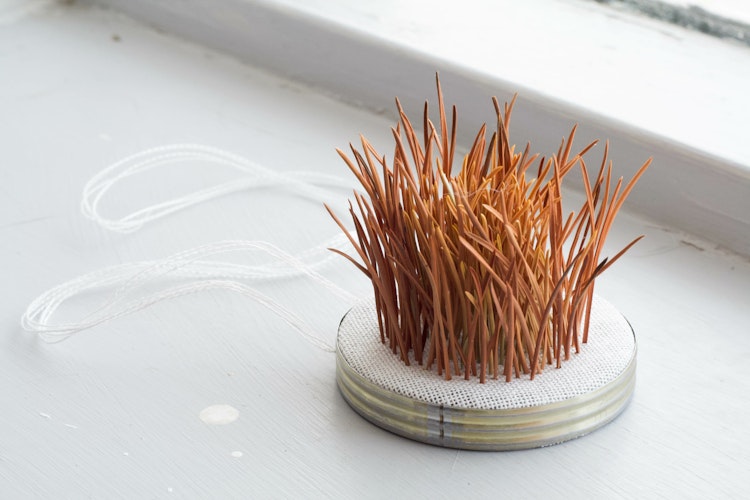
The third artist, Kristine Ervik, bends ring after ring of steel in a European chain weave. In her weaving, the small brass rings are tightly set together, making them behave as a textile, heavy as a fully drenched towel. It's taking the shape of a breast, sagging from its own weight, with a shiny metal drop hanging from the tip. As gravity and time takes hold of our bodies, we sink. Our skin folds in new landscapes as death approaches. Ervik translates the feeling of being trapped in the flesh prison that is our bodies into jewellery. Etching and hammering the texture of skin in metal, and melting the surface with a torch to distort the silver, as it cools, the surface retracts as wrinkly skin. She cuts and saws, but no blood appears, only the open wounds of metal and dried up rust.
When I ask her why she gravitates towards “destroying” the metal, Ervik says, ‘I've always found textured surfaces the most interesting. The so-called flaws and weaknesses such as nicks, scratches, wrinkles, and rust. The rough and uneven. For me, it contains a story, a before and after, and it represents the perishable state of both life and object. (…) Impermanence is the way of things, of life. It's beauty, doubt, and insecurity, relief. My artistic practice is more or less driven by it.3
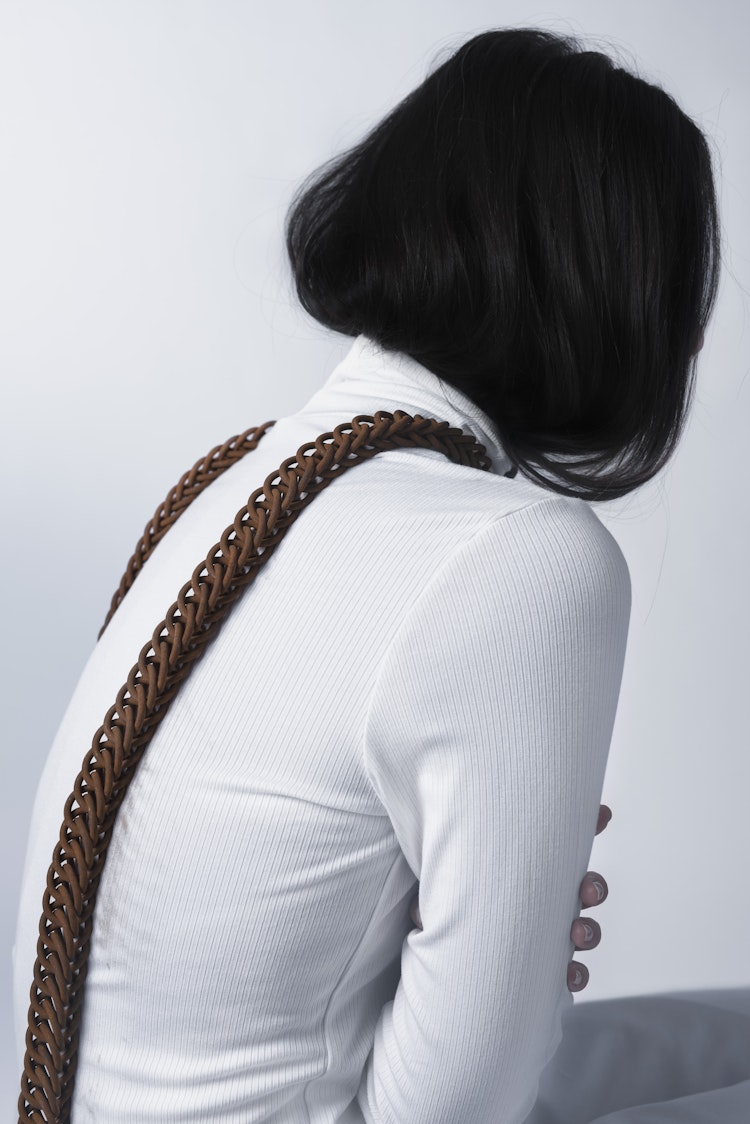
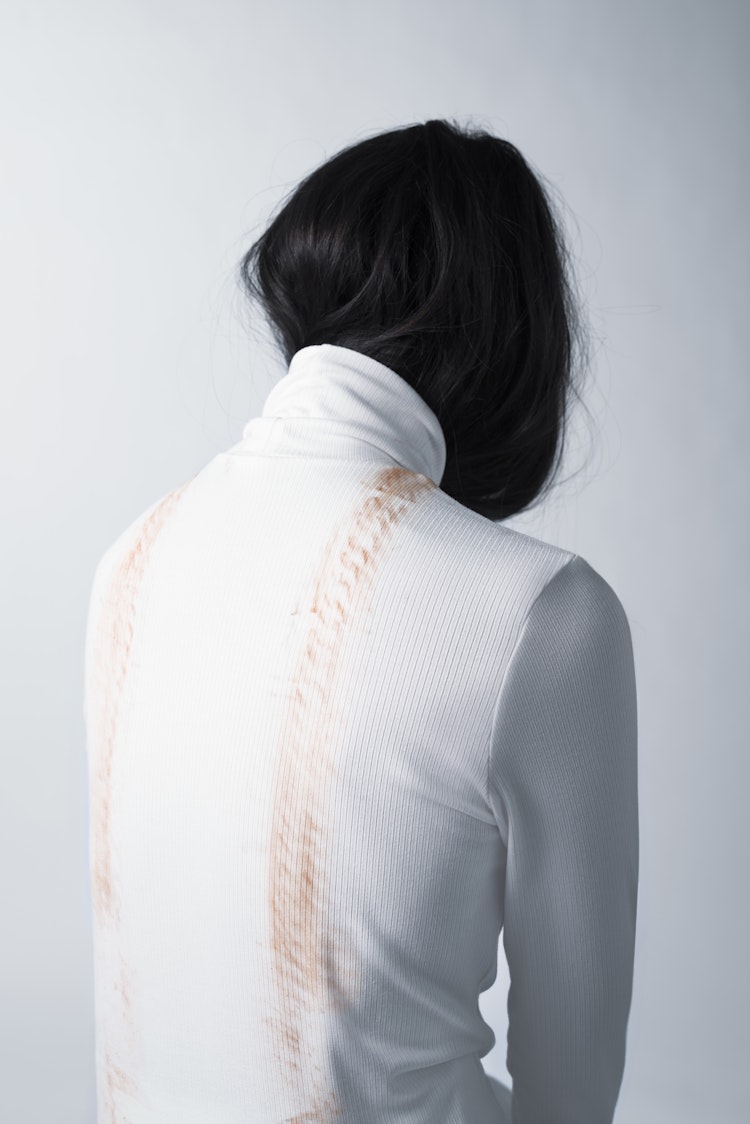
It is so heavy to wear the chain around the neck. The rust from its surface tainting the clothes. In the image above, you can still see the pattern of the half Persian chain weave, with the chain taken off. As the rings have not been welded or soldered shut, the title Det er ingen her som holder igjen/There is no one here holding back makes a lot more sense, as the chain rings will open if pulled hard enough.
The surface of the raw iron reacts almost immediately to the air; we might just not see it yet. The oxygen and moisture feel like they are dragging out the rust from the metal, tainting the surface with a matt iron red. Is the air we live in that harsh? The passive chemical laws exhibited on the steel seem brutal to us. But I guess our bodies must seem quite alien and complex to an element like iron.
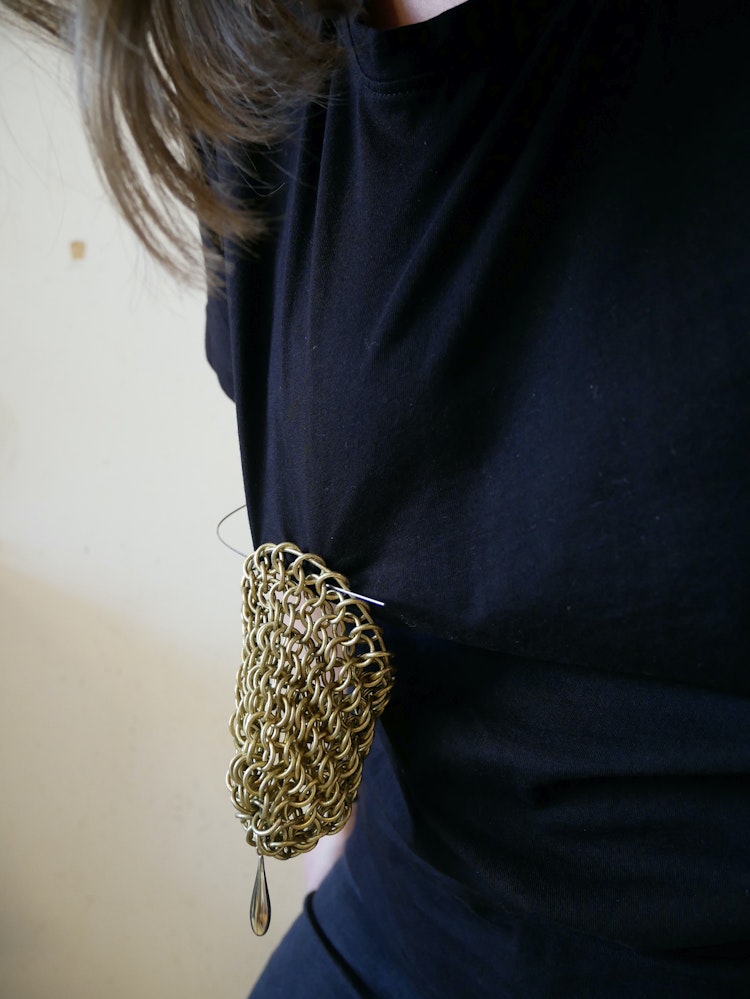
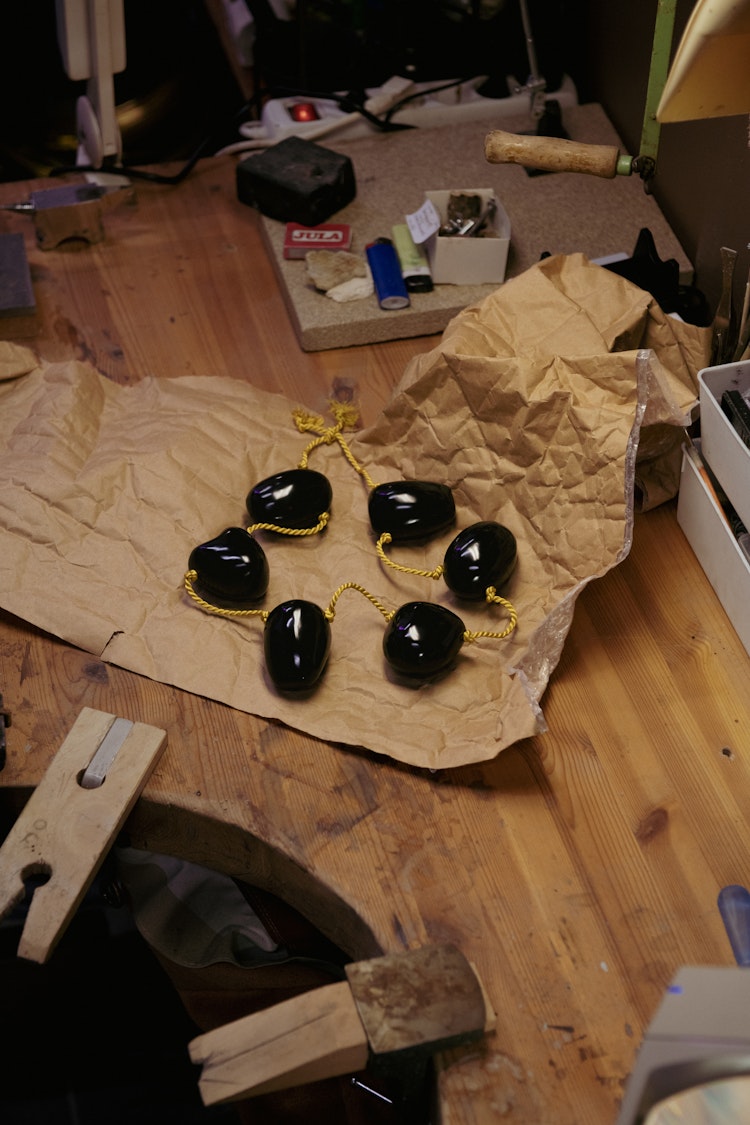
Three jewellery artists who are making unwearable, feeble, and short-lived jewellery. Does jewellery need to outlast us? The prestige and ever-so-high pedestal of status and wealth that has been surrounding jewellery for millennia – is it in its final stage of crumbling, and ready to fall? Let’s certainly hope so. Our society still clings to being remembered through artefacts, statues, and the use of eternal materials like gold, that does not corrode... We are stretching ourselves thin in our longing for the everlasting. The Western world view of death is not much of a subject to be talked about in society. A contemporary jeweller's job is not to give the wealthy more, so let's hope these artists of “dying jewellery” revive deeper meaning and reflective thoughts through their use of perishable materials.4 Lost knowledge, lost aesthetics, lost meanings. There is loads of jewellery forgotten by time that has diminished. You had to be there.